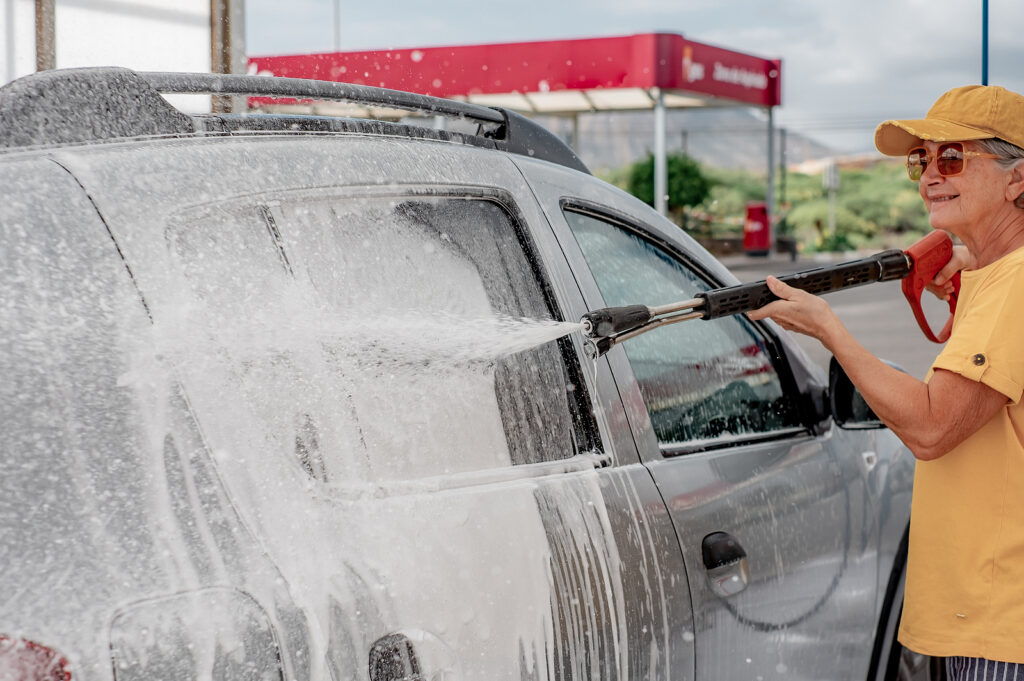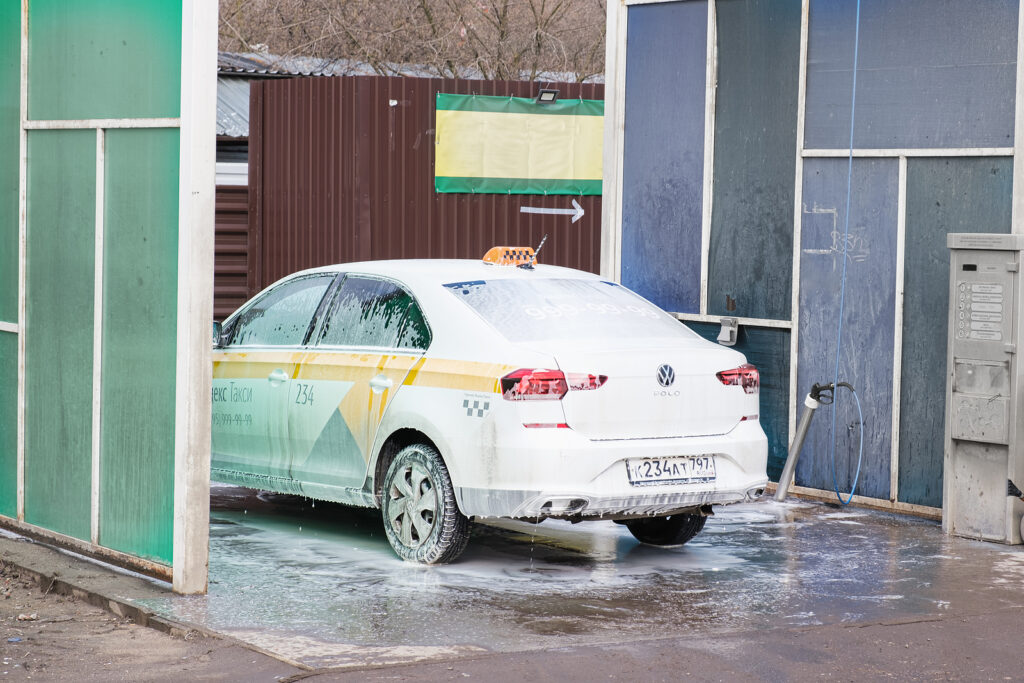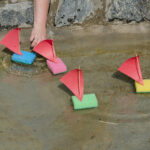Best Car Wash DIY Near Me
Are you searching for the “Best Car Wash DIY Near Me?” Look no further. We've gathered a comprehensive guide to help you achieve a sparkling clean car from the comfort of your home. Dive into these tips and techniques to master the art of DIY car washing.
Car Wash DIY
In our modern, hustle-and-bustle world where every minute counts, there's a growing inclination towards seeking shortcuts in many aspects of our lives. A swift detour to the local automated car wash can easily lure anyone with its promise of speed and convenience. However, there exists a profound joy and sense of accomplishment in the hands-on process of cleaning your prized vehicle by yourself.
Rolling up your sleeves and personally attending to each curve and corner of your car not only deepens your connection with the machine but often leads to a more thorough and attentive cleaning. There are subtleties and specifics about your vehicle that a machine or hurried staff might overlook, but your discerning eye and care won't.
Armed with expert knowledge, a few insider tricks, and the appropriate cleaning tools, anyone can rival the finish offered by professional car wash services. The process becomes more than just a cleaning routine; it transforms into an act of care, a ritual of preservation, and a testament to the pride of ownership.
Tools and Materials for the Best DIY Car Wash
Before embarking on the journey to give your car a refreshing wash, it's crucial to be equipped with the right tools and materials. The difference between a satisfactory and an outstanding wash can often be traced back to the quality and specificity of the tools used. So, when you're looking for the “Best DIY Car Wash Near Me,” make sure you have the following items on hand:
- Car-specific Shampoo: It's imperative to use a shampoo designed explicitly for cars. Common household items like dish soaps may seem effective, but they can be harmful. They tend to strip away the protective layers from your car's paint, leaving it vulnerable to elements.
- Two Bucket System: This is essential for ensuring a thorough and swirl-free wash. One bucket will contain the soapy mixture, while the other will be used for rinsing your wash mitt or sponge, keeping the contaminants away from the cleaning solution.
- Wash Mitt or Soft Sponge: Always opt for something gentle yet efficient. A quality wash mitt or sponge ensures that dirt and debris are lifted from the car's surface without causing scratches or swirls.
- Microfiber Towels: These are a must-have for drying and buffing. Their soft, lint-free nature ensures a streak-free finish without inflicting any scratches on your car's paint.
- Wheel Brush: Your tires and rims collect a lot of road grime and brake dust. A dedicated wheel brush helps reach those tight spaces and ensures thorough cleaning.
- Hose with an Adjustable Nozzle: A hose is essential for rinsing away the soap. An adjustable nozzle is a bonus as it allows you to regulate the pressure, ensuring a gentle yet effective rinse.
- Wax or Sealant: After washing, it's beneficial to apply a layer of wax or sealant. This step isn't just for aesthetics – it offers a protective layer against UV rays, pollutants, and other potential hazards.
- Interior Cleaning Agents: The exterior isn't the only part that needs attention. Depending on your car's interior – be it leather, fabric, or synthetic materials – ensure you have the right cleaning agents to rejuvenate and protect the inside.

Steps to a Perfect DIY Car Wash
Pre-Wash Rinse
Before diving into the actual washing, give your car a preliminary rinse. This initial rinse helps in dislodging and removing larger chunks of dirt, dust, and any loose debris. By doing so, you significantly minimize the risk of scratching or damaging the paint when you start scrubbing it later.
Adopt the Two-Bucket Wash System
The genius behind the two-bucket method lies in its simplicity and efficiency. One bucket holds the soapy water solution, while the other holds plain, clean water for rinsing. The process is straightforward:
- Soak the mitt or sponge in the soapy water.
- Gently scrub a section of your car.
- Before re-soaping the mitt, rinse it in the clean water bucket to wash off the dirt.
This meticulous process ensures that you’re not reintroducing dirt and contaminants onto the car's surface, which could lead to scratches.
Begin from the Top
An essential technique in car washing is to always initiate the process from the roof and gradually work your way downwards. By adopting this top-to-bottom approach, you avoid the unnecessary hassle of soap and grime dripping onto the sections you've already cleaned, ensuring a systematic and efficient cleaning process.
Pay Special Attention to the Wheels
Given the direct contact and exposure to road elements, wheels and tires often become the grimiest parts of a vehicle. They require dedicated care. Invest in a quality wheel cleaner that can effectively break down brake dust and road tar. Utilize a specialized wheel brush to ensure you reach all the tight spots and intricate wheel designs, leaving no grime behind.
Thorough Rinse and Proper Drying:
After ensuring every inch of your car is clean, it's time to rinse away all the soap residue. Using a hose with a gentle flow, rinse the car, making sure no suds remain. Post rinsing, immediately dry the vehicle using soft microfiber towels. Drying is a crucial step as it prevents unsightly water spots and streaks from forming on the paint. Plus, microfiber towels are exceptionally absorbent and gentle, ensuring a scratch-free and efficient drying process.
Tips to Protect Your Car's Paint
Steer Clear of Direct Sunlight
While it might be tempting to wash your car on a bright sunny day, it's not the best idea if you're aiming to protect your car's paint. Washing under direct sunlight accelerates the evaporation rate, which can lead to water spots, as the minerals in the water remain on the surface. Moreover, soaps can dry prematurely, making them difficult to rinse off and potentially harming the paint. For best results, wash your car in a shaded area or during the cooler parts of the day, like early morning or late afternoon.
Opt for Microfiber Towels
When it comes to drying or even buffing your car, the choice of cloth can make a significant difference. Microfiber towels are the gold standard in automotive care. Their unique design and construction make them incredibly soft, which means they effectively lift and trap dirt and moisture without causing any abrasive damage. Their high absorbency ensures that your car dries faster, reducing chances of water spots, and they won’t introduce swirls or scratches.
Regularly Apply Wax or Sealant
Waxing or sealing your car isn't just about achieving that showroom shine; it's primarily about protection. A good-quality car wax or sealant forms a protective barrier on the surface. This barrier defends the paint from various contaminants like bird droppings, tree sap, and road tar. Moreover, it provides UV protection, shielding the paint from the harmful effects of the sun which can lead to fading. For maximum protection and longevity, it's recommended to wax or apply sealant every few months.
Additional Tips:
- Gentle Cleaning Products: Always opt for pH-balanced, car-specific shampoos. Household cleaning agents might be harsh and strip away the car's protective layers.
- Avoid Automatic Car Washes: While convenient, many automatic car washes utilize hard brushes that can introduce fine scratches or swirls into your car's paint.
- Park Smartly: Whenever possible, park in shaded areas or use car covers. Direct exposure to sunlight, over time, can fade the paint and reduce its shine.

The Best DIY Car Interior Cleaning Techniques
Declutter and Organize
Begin by emptying the car's interior. Remove all personal items like sunglasses, chargers, toys, and especially the forgotten items under the seats. Additionally, clear out any trash, such as receipts, wrappers, or empty bottles. This step ensures you have unobstructed access to all parts of the interior and also gives you a chance to reorganize your essentials later.
Vacuuming: Comprehensive and Thorough
A good vacuum job is at the heart of a clean car interior. Start with the seats, ensuring you get into the seams and crevices where crumbs and dirt can accumulate. Move to the carpets and floor mats, giving special attention to the areas under the seats. Using a nozzle or brush attachment can be particularly effective in reaching tight spaces, corners, and air vents. Don’t forget the trunk!
Cleaning and Conditioning the Interior:
- Leather Interiors: Start with a gentle leather cleaner to remove surface dirt and oils. After cleaning, always follow up with a high-quality leather conditioner. This restores moisture, prevents cracking, and leaves your leather looking and feeling supple.
- Fabric Interiors: Utilize fabric or upholstery cleaners to tackle stains and general dirt. Ensure you follow the product's guidelines, some might require dilution or specific application techniques.
- Dashboard, Center Console, and Doors: These areas, often overlooked, can accumulate dust and grime. Use a gentle all-purpose cleaner or specific car interior cleaner, and always finish with a UV-protective product to prevent sun damage.
Crystal Clear Windows
Your windows aren't just about the view outside; they're about safety. Always use an automotive-specific glass cleaner, as household ones might leave residues that can affect visibility, especially during nighttime. Wipe in circular motions and ensure a streak-free finish for optimal clarity.
Freshen Up and Revitalize
A clean car isn’t just about appearance but also the ambiance. Consider using a car deodorizer or air freshener. Choose from hanging fresheners, vent clips, or under-seat sachets. For a more natural approach, consider placing activated charcoal bags which not only give a fresh scent but also absorb odors.
Pros and Cons of “Best Car Wash DIY Near Me”
Embarking on a DIY car wash journey can be a rewarding experience, but it's essential to weigh the pros and cons before starting. Whether you're considering this as a cost-saving measure, for personal satisfaction, or for environmental reasons, let's explore the advantages and disadvantages of the “Best Car Wash DIY Near Me.”
Pros of DIY Car Wash:
- Cost-Effective: Washing your car at home can save money in the long run. You invest once in quality products and tools, which can last multiple washes.
- Attention to Detail: You're likely to pay more attention to specific areas of your car that automated or professional car washes might miss.
- Personal Satisfaction: There's a certain joy and accomplishment in cleaning your vehicle. This act can be therapeutic for many.
- Control Over Products: You choose the products, ensuring they're eco-friendly or specific to your car's needs, protecting your car's paint and finish.
- Flexibility: Wash your car whenever you like. No need to adhere to business hours or wait in lines.
- Less Risk of Damage: Automated car washes can sometimes cause minor scratches or damages. By washing your car yourself, you can ensure gentleness.
Cons of DIY Car Wash:
- Time-Consuming: Properly washing and detailing a car can take up a significant chunk of time, especially if you're aiming for thoroughness.
- Initial Investment: Quality car wash tools and products can be pricey. Though they last multiple washes, there's an upfront cost.
- Water Usage: Without proper equipment, you might end up using more water than necessary, which isn't environmentally friendly.
FAQs for DIY Car Wash
1. Why opt for a DIY car wash instead of an automated service?
Choosing a DIY car wash over an automated one provides numerous advantages. Firstly, it allows you to intimately engage with every nook and cranny of your vehicle, deepening your bond and understanding of your car. This hands-on approach guarantees a meticulous cleaning process, ensuring you spot and address minute details that a machine might neglect. It also provides a personalized touch, allowing for customization based on your vehicle's specific needs.
2. Is it crucial to use car-specific shampoo? Why not just use dish soap?
Dish soaps may give the illusion of being effective due to the suds they produce. However, they are formulated to combat grease, which means they can strip away the essential protective coatings on your car's paint. Using car-specific shampoos safeguards your vehicle's finish, ensuring both its aesthetics and protection are maintained.
3. Can you explain the benefits of the two-bucket washing method?
Certainly! The two-bucket system is a tried-and-true method among car enthusiasts. This system minimizes the reintroduction of dirt and contaminants back onto your car's surface, dramatically decreasing the potential for scratches and paint damage. In this method, one bucket contains the soapy solution, while the other serves as a rinse bucket for your cleaning mitt or sponge, ensuring contaminants are not transferred back to the vehicle.
4. Is there a recommended sequence for washing the car?
Yes, a systematic approach ensures optimal results. Starting from the top (like the roof) and progressing downwards ensures that soap and dislodged dirt do not drip onto areas you've already cleaned. This top-to-bottom method ensures a more efficient and effective cleaning process.
5. Why should I dry the car immediately after rinsing?
Drying your car immediately post-rinsing is crucial for several reasons. It prevents the formation of unsightly water marks and streaks caused by minerals in the water. Using a high-quality microfiber towel will not only absorb the water effectively but also ensure a smooth, streak-free, and scratch-less finish.
6. How frequently should I wax or seal my vehicle?
To ensure your car's paint remains in top-notch condition, it's advised to wax or apply a sealant every few months. This not only enhances the shine but also offers a protective barrier against environmental contaminants.
7. What's the best approach to removing tough stains from my car's interior fabric?
When dealing with stubborn stains on fabric interiors, it's best to rely on specialized fabric or upholstery cleaners. Remember to follow the manufacturer's instructions closely, as some cleaners may have unique application or dilution recommendations.
8. Why should direct sunlight be avoided when washing a car?
Washing your car under direct sunlight can introduce several complications. The intensified heat accelerates the evaporation process, increasing the likelihood of water spots. Furthermore, car wash soaps can dry out too quickly under the sun, making them more challenging to rinse away and increasing the risk of paint damage. Always aim for a shaded spot or choose a cooler time of the day for your DIY car wash.
Conclusion
Having journeyed through the intricacies of a DIY car wash, it's become evident to me that car care goes beyond mere functionality. It's a labor of love, a meditation, and a personal bond that we foster with our vehicles. Each stroke of the wash mitt, each dab of wax, and every swipe of the microfiber towel isn't just about maintaining aesthetics; it's a reflection of our appreciation for the engineering marvel that is our car.
Over the years, my vehicle has been a silent witness to numerous road trips, daily commutes, and spontaneous adventures. And while I've occasionally given in to the lure of a quick automated car wash, there's an unparalleled satisfaction in the hands-on approach. Beyond the glistening finish and that sense of accomplishment, the process has instilled in me a deeper understanding of my car's needs and nuances.




